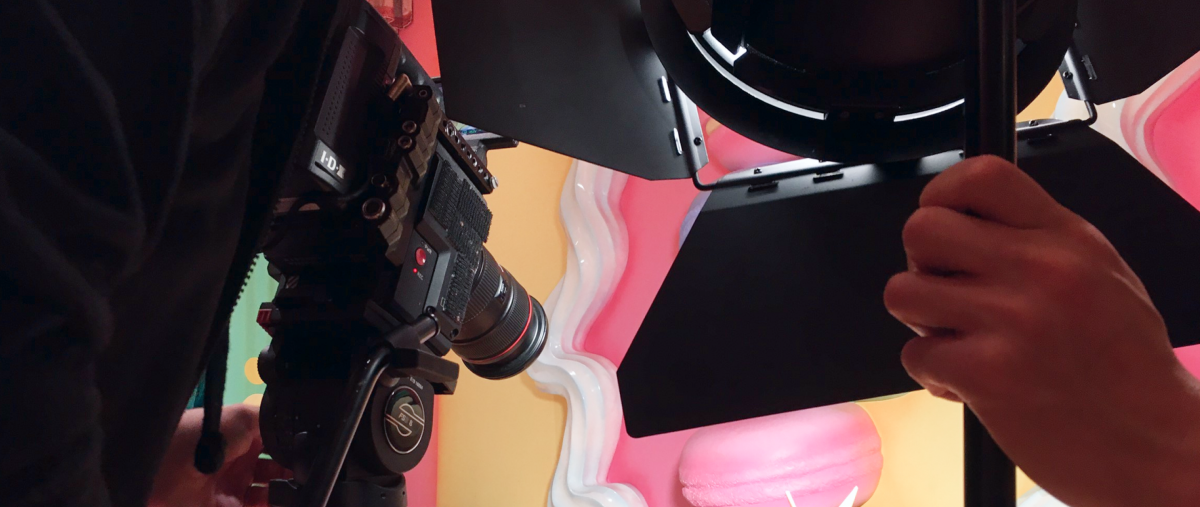|
|
Create compelling video content with these six elements from film and TV
FADE IN
EXT. DIGITAL MARKETING LANDSCAPE – DAY
We pan across the digital marketing world to reveal videos. Everywhere.
In fact, the average person spent 19 hours per week watching videos online in 2022 – up from 10.5 hours per week in 2018. Today, construction equipment manufacturers and toy brands alike leverage video content as a key part of their marketing strategies, and 87% of marketers say video has helped them increase sales.
But this shouldn’t come as any surprise. Film and television have long been masters of capturing audiences’ attention and delivering key messages through visual storytelling. And the same techniques that Hollywood employs to captivate viewers can just as easily drive affinity for any brand willing to adopt them.
Here are six essential elements from film and TV that can differentiate brand video content:
1. Focus on the narrative: Just as film and television rely on compelling stories to entertain viewers, it pays to prioritize a narrative with a clear beginning, middle, and end. From documentaries about Wall Street to Saturday morning cartoons, narratives almost always feature protagonists working to overcome an obstacle. That’s how campaigns like Apple’s “The Underdogs” capture and maintain viewer interest.
2. Create an emotional connection: Great films excel at evoking emotions, from humor to heartbreak, often in the same story. Brand video content stands to forge deeper connections with viewers by leaning into the drama, like Google’s “Year in Search” videos, which highlight shared experiences and poignant moments.
3. Embrace creativity: With “Everything Everywhere All at Once” taking the top prize at the Oscars, it’s clear audiences are ready for out-of-the-box stories. Similarly, in a digital landscape saturated with content, the most creative videos rise to the top. For instance, Airbnb’s “Wall and Chain” video showcases a unique approach by employing captivating, animated visuals and evocative sound design to tell a touching story.
4. Craft powerful opening and closing moments: Hollywood knows the value of a gripping open and a resonant close. Brand videos can take advantage of strong hooks and conclusions to engage and leave a lasting impression on viewers. A great example is Intel’s “Meet the Makers: Shubham Banerjee & Intel Edison,” which starts with eye-catching visuals and ends with an inspiring call to action.
5. Keep it authentic: Perhaps your own habits or opinions have been shaped by a documentary that shared a genuine message with you. Ensuring that content reflects core values creates a deeper and lasting connection with the audience. In “Reverse Selfie,” Dove petitions parents to talk with young girls about the impact of social media on self-esteem. By sharing a meaningful and authentic perspective, the brand skips passed competitor content and reaches a new audience.
6. Adapt to emerging trends: Television, especially, continues to evolve, embracing new technology and formats like streaming platforms and interactive shows. Brand video content, too, should adapt to trends in online video, like short-form video, vertical formats, and, yes, user-generated content. Live streaming, for example, is an increasingly popular way to consume online video that Red Bull has taken advantage of to share action sports.
Not every brand video will lend itself to a gripping emotional narrative or a stunning concluding shot, but, when possible, these elements can create a viewing experience that captures valuable attention in a sea of competing content. Film and television have been keeping audiences riveted for generations, and the same techniques they use to keep viewers in their seats can help brands leave an impression that lasts long after the screen…
FADES TO BLACK.








